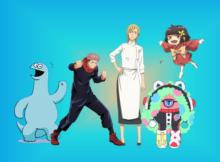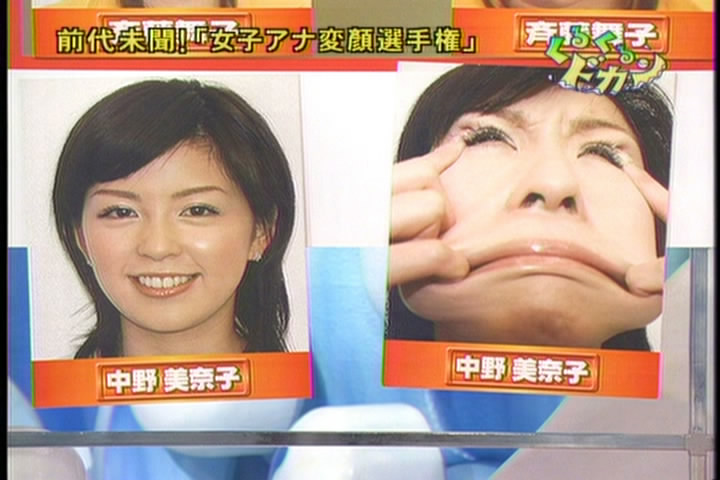
What is the full form of SNS?
“SNS” is an abbreviation for “ Social Networking Service “. SNS is a language peculiar to Japanese and refers to social media services such as Facebook, Instagram, and Twitter in English. It is often used in Japanese news and business, and is often pronounced as “SNS, a so-called social network service.”
What is SNS in Japan?
The term SNS Japan is commonly used in Japan as referring to various social media services. This article explains more about the SNS in Japan, history and also the most popular SNS App in 2019. “SNS” is an abbreviation for “ Social Networking Service “.
What is a'social networking service (SNS)?
What is a 'Social Networking Service (SNS)'. A social networking service (SNS) is an online vehicle for creating relationships with other people who share an interest, background or real relationship. Social networking service users create a profile with personal information, photos, etc. and form connections with other profiles.
What is SNS nail polish?
What is SNS? In short, SNS stands for Signature Nail Systems, a powder dipping technique which is finished with a brush-on, gel-based polish. The application of the polish goes first, then the nail is dipped into the pigmented powder, and then polished over again.

What does SNS in anime mean?
In Japan, the term “SNS” stands for “Social Networking Service”. The term SNS Japan is commonly used in Japan as referring to various social media services. This article explains more about the SNS in Japan, history and also the most popular SNS App in 2019.
What does SNS mean in text?
Meaning. SNS. Sorry Not Sorry. SnS. Sword and Shield (Monster Hunter; gaming)
What is a SC in anime?
SC. Samurai Champloo (anime series) SC. Statement of Compatibility (various locations)
What OPM means in anime?
One-Punch Man (Japanese: ワンパンマン, Hepburn: Wanpanman) is a Japanese superhero franchise created by the artist ONE.
What is SNS Kpop?
If you're a lover of K-pop or K-drama, then you'll come across this word very often. Okay, let me be brief. It's a Konglish word (Korean + English). SNS stands for “Social Network Service,” so it refers to any social media, such as Facebook, Instagram, Twitter, Pinterest, and so forth.
What does SBS mean?
Special Broadcasting Service - Wikipedia.
What does SSS mean in anime?
It means Super or Superior or alike surprise. Superlative classification. Super x3, Super x2, is weird to put Sx2, Sx3, so it is SSS, SS. Some of games you can see R, SR, SSR, UR.
What does IMO mean in anime?
It means "in my opinion"
What does UB mean in anime?
Unknown Beyond (anime site) UB.
Who is the strongest anime character?
The 12 Strongest Anime Characters of All Time1 Saitama (One Punch Man)2 Son Goku (Dragon Ball) ... 3 Giorno Giovanna (JoJo's Bizarre Adventure) ... 4 Anos Voldigoad (The Misfit of Demon King Academy) ... 5 Tetsuo Shima (Akira) ... 6 Muzan Kibutsuji (Demon Slayer) ... 7 Kaguya Otsutsuki (Naruto) ... 8 Yhwach (Bleach) ... More items...•
Who can defeat Saitama?
1. Zeno (Dragon Ball Super) Can Beat Saitama easily. The king of Multiverse is stronger than anyone. This child-like being is the most dangerous in the universe.
How old is Saitama?
25-year-oldSaitama. The title character, Saitama (サイタマ), is a bald-headed 25-year-old man who is bored of fighting because he is effortlessly able to defeat enemies with a single punch.
What does SNS mean in Japan?
Meaning of SNS in Japan. “SNS” is an abbreviation for “ Social Networking Service “. SNS is a language peculiar to Japanese and refers to social media services such as Facebook, Instagram, and Twitter in English. It is often used in Japanese news and business, and is often pronounced as “SNS, a so-called social network service. ”.
Why is it important to operate the SNS regularly?
It is necessary to operate the SNS regularly and in a timely manner because the latest version of the account is optimized and displayed to each SNS user. The optimal number of posts per day varies for each social network, but it is important to have resources and a posting plan for the long term.
How many MAUs are there in Japan?
According to LINE’s public documents, as of the end of June 2019, there were over 81 million MAUs in Japan. This is an SNS application used by over 64% of the Japanese population. This app, which almost all Japanese smartphone users use, has almost the identical gender composition and has been used in a wide range of ages.
What does it mean when a fan likes a product?
Fans who like a product or service get a sense of elation when they get a direct response from the official account , such as a reply. This kind of direct contact triggers a positive impression, even if you don’t become a follower. Although it is a steady operation, the response status is viewed by many SNS users on the social network, and it is an opportunity to create a positive impression of not only your SNS account but also your products.
What percentage of Twitter sales are in Japan?
Japan accounts for 16.7% of sales on Twitter’s global market, especially in Japan where anonymous culture is strong. In addition to general users, people in various positions, such as companies, entertainers, characters, and politicians, are also active on Twitter.
Is SNS used in China?
It originally boasts the largest number of users in China for services in China, and now is an SNS that has created many trends and celebrities in the Asian region. In Japan, the use has been increasing in recent years mainly for young people, especially women.
Can other SNS users see count?
As a continuation of the above, if other SNS users can view the content of the official count’s sincere correspondence with fans, there is a high possibility that potential users will become apparent. In addition, users can share or reply to posts that they like, which will increase the number of times it is displayed and spread.
What is the name of the manga that is a shana?
Anime and manga portal. Shakugan no Shana ( Japanese: 灼眼のシャナ, lit. "Burning-Eyed Shana"), also known simply as Shana (シャナ), is a Japanese light novel series written by Yashichiro Takahashi with illustrations by Noizi Ito.
What episode does the song "Sense" come from?
The song "Sense" by Kawada was used as the final ending theme for episode 24, and was released on Kawada's album Savia in March 2008. The original soundtrack for Shakugan no Shana Second was released in January 2008.
What is the second manga of Shakugan no Shana X Eternal Song?
A second manga illustrated by Shii Kiya, titled Shakugan no Shana X Eternal song: Harukanaru Uta (灼眼のシャナX Eternal song -遙かなる歌-), is based on the events of the tenth novel and began serialization in ASCII Media Works' manga magazine Dengeki Black Maoh on September 19, 2007.
How many pages are there in Shakugan no Shana no Subete?
The novels are also licensed in South Korea by Daewon C.I., and in Taiwan and Hong Kong by Kadokawa Media. A 160-page guide book titled Shakugan no Shana no Subete (灼眼のシャナノ全テ, All About Shakugan no Shana) was published on December 10, 2005 by ASCII Media Works.
How many volumes are there in Shakugan no Shana?
Shakugan no Shana began as a light novel series written by Yashichiro Takahashi, with illustrations drawn by Noizi Ito. ASCII Media Works published 26 volumes between November 9, 2002 and November 10, 2012 under their Dengeki Bunko imprint; 22 comprise the main story, while the other four are side story collections.
When was Shakugan no Shana released?
An action RPG visual novel titled Shakugan no Shana, developed by Vridge and published by MediaWorks, was released on March 23, 2006 for the PlayStation 2 (PS2). A 36-page A4 -sized art book titled Honō (焔) featuring illustrations by Ito was available to those who pre-ordered the game.
When did Shakugan no Shana SP come out?
Later, an original video animation (OVA) episode titled Shakugan no Shana SP, which takes place after the events of episode 13, was released on December 8, 2006.
Synopsis
The story centers around the titular SNS Police (Social Network Service Police), who protect the peace in social media sites like Twitter and Facebook and deal harsh justice to those who violate it.
Background
No background information has been added to this title. Help improve our database by adding background information here.
Characters & Voice Actors
No characters or voice actors have been added to this title. Help improve our database by adding characters or voice actors here.
Reviews
No reviews have been submitted for this title. Be the first to make a review here!
Recent News
Here is a collection of promotional videos (PVs), TV ads (CMs), and trailers for the last week. This thread excludes videos that have already been featured in an art... read more
When was the first SNS?
The first SNS, SixDegrees.com was started in 1997 and was soon followed by Friendster, MySpace, and Facebook. 1 Today, there are a wide range of SNS and nearly 80% of Americans have SNS profiles. 2 SNS range from sites where users have general interests to those where users have very specific interests.
What is social networking service?
A social networking service (SNS) is an online vehicle for creating relationships with other people who share an interest, background, or real relationship. Social networking service users create a profile with personal information and photos and form connections with other profiles. These users then use their connection to grow relationships ...
What are the characteristics of social networking?
While social networking services may take many forms, they share several characteristics, such as all utilizing the internet. Other similar characteristics include: 1 User-generated content, such as photos, videos, and posts that inform other users about the activities and interests of the poster. 2 The ability to connect individuals from all over the world, though some platforms recommend that individuals know one another in real life before connecting online. 3 They are free. Their business model is based on breadth of membership, therefore charging for use would be counterproductive. Still, the possibility remains that if a network grew large and useful enough, charging a fee may be possible. 4 They connect people with common histories, such as school attendance, work colleagues, or people who share a common interest. 5 They may help forge and develop relationships between people who share a profession or business network. 6 They may be used to help individuals find information, products, services or resources that are relevant to them.
Can social networking cause anxiety?
This is especially a concern for job seekers whose potential employers might search for their profiles as part of the hiring process. Social networking service overuse may lead to depression and anxiety. Such services may also facilitate bullying and other risks to child safety.
Can SNS users see their movements?
In addition to potential leaks of personal information, including tax and personal identification information, SNS users who are not careful about their privacy setting s find that strangers can track their movements or see questionable photos.
What is SNS?
In short, SNS stands for Signature Nail Systems, a powder dipping technique which is finished with a brush-on, gel-based polish. The application of the polish goes first, then the nail is dipped into the pigmented powder, and then polished over again.
The benefits of SNS
Aside form often being cheaper than a full gel manicure, SNS is touted as better in the respect of nail health, but there are no hard facts to back the sentiment up. This claim is usually backed up by the fact that SNS doesn't require the use of UV light to harden the nails, but the damage done is often in the removal process, more on that, below.
Is it natural?
Technically, yes. Many dipping systems tout themselves as “natural” which is true to a certain degree, but a little deceptive. Things that are natural are derived from nature, so to say that they are natural is true, but to attach SNS to the sentiment that it is organic is not exactly truthful considering standard SNS is not certified organic.
Is SNS healthier than acrylic?
There is very little evidence to suggest that the process of SNS is any more beneficial your nails than gel polish, hard gel or acrylic. As mentioned, the damage caused to your natural nails is not the product itself, but the application and removal process.
Does SNS damage the nails?
Nails should seldom be damaged in the manicure process no matter what kind of polish you're using, the removal process, however, it a different story.
How does SNS feel?
SNS nails are said to feel as light as gels, but with more durability and longevity. They are also said to be more flexible that gel or shellac, so you can do wild things with your hands sans the fear of things splitting, breaking, or peeling.

Popular Posts:
- 1. what does dementia mean in anime
- 2. how do i get the anime filter
- 3. what anime is neo from
- 4. where can i watch kamisama kiss anime
- 5. why does everyone love anime
- 6. does billie eilish like anime
- 7. which anime character you are
- 8. where to watch komi can't communicate anime
- 9. are forearms as long as the upper arms art anime
- 10. a silent voice anime studio